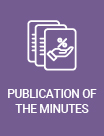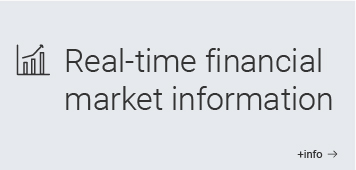Banco de la Republica, the Central Bank of Colombia, increases the intervention interest rate
The Board of Directors of Banco de la Republica, the Central Bank of Colombia, has decided to increase de intervention interest rate by 25 base points. Therefore, the base rate for expansion auctions will be 5.00%. In the decision-making process, the following was taken into account:
- In Europe, the public debt of some countries in the region added to doubts on the solvency of certain banks, continue to affect household and enterprise confidence. Recession in Europe is likely to be worst than anticipated several months ago. On the other hand, the United States economy in 2012 is expected to grow at a positive rate, though somehow lower as compared with its usual potential.
- International prices of commodities remain at high levels and encourage producing countries’ national income.
- In Colombia, as of the third quarter o 2011, the GDP grew on a 7.7% annual basis, this figure being historically high and above the expectations. Internal demand’s annual growth (9.4%) was explained by the sharp increase of both investment and household consumption.
- The most recent information suggests that, in the fourth quarter, Colombian economy had continued to exhibit a strong dynamism. In the external balance, both exports and imports kept on growing at high rates in November. All this added, the economic growth projected by the technical equipment for 2011 is higher than 5.5%.
- For 2012, the forecast interval remained between 4% and 5%.
- Bank credit continued to show high increase rates. Consumption credit behavior suggests that households are significantly enhancing their degree of leverage. New and used housing indexes remain at historically high levels.
- The average of base inflation measures went up again; most of them exceed 3%.
- Inflation expectations were higher.
- A disorderly adjustment in Europe continues to be the worst risk in core predictions for growth. Should this risk materialize, the world economy would grow significantly less than expected, international commodity prices would likely plunge, and global risk-aversion might be exacerbated. As a result, the Colombian economy may be adversely affected. Moreover, the main risk on inflation comes from excessive demand expansions or higher-than-expected cost increases, with strong and lasting effects on monetary policy expectations and credibility. In a longer time horizon, an excessive credit growth and persistently low real interest rates could become the source of financial unbalances with negative consequences on economic growth sustainability.
According to the present risk-balance assessment, the Board of Directors has decided to increase the Banco de la Republica’s intervention interest rate by 25 base points.
The Board will continue to carry on its careful monitoring of the international situation along with inflation behavior and projections and asset market’s growth and performance, while reiterating that the monetary policy will depend on the new information available.
Bogota














.png)

































